ZHCS339E August 2010 – June 2019 AFE031
PRODUCTION DATA.
- 1 特性
- 2 应用
- 3 说明
- 4 修订历史记录
- 5 说明(续)
- 6 Device Comparison Table
- 7 Pin Configuration and Functions
-
8 Specifications
- 8.1 Absolute Maximum Ratings
- 8.2 ESD Ratings
- 8.3 Thermal Information
- 8.4 Electrical Characteristics: Transmitter (Tx)
- 8.5 Electrical Characteristics: Power Amplifier (PA)
- 8.6 Electrical Characteristics: Receiver (Rx)
- 8.7 Electrical Characteristics: Digital
- 8.8 Electrical Characteristics: Two-Wire Interface
- 8.9 Electrical Characteristics: Internal Bias Generator
- 8.10 Electrical Characteristics: Power Supply
- 8.11 Timing Requirements
- 8.12 Timing Diagrams
- 8.13 Typical Characteristics
- 9 Detailed Description
- 10Application and Implementation
- 11器件和文档支持
- 12机械、封装和可订购信息
10.2.1.3 Thermal Considerations
In a typical powerline communications application, the AFE031 dissipates 2 W of power when transmitting into the low impedance of the ac line. This amount of power dissipation can increase the junction temperature, which in turn can lead to a thermal overload that results in signal transmission interruptions if the proper thermal design of the PCB has not been performed. Proper management of heat flow from the AFE031 as well as good PCB design and construction are required to ensure proper device temperature, maximize performance, and extend device operating life.
The AFE031 is assembled into a 7-mm2 x 7-mm2, 48-lead, QFN package. As Figure 51 shows, this QFN package has a large area exposed thermal pad on the underside that is used to conduct heat away from the AFE031 and into the underlying PCB.
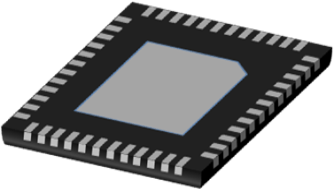 Figure 51. QFN Package with Large Area Exposed Thermal Pad
Figure 51. QFN Package with Large Area Exposed Thermal Pad Some heat is conducted from the silicon die surface through the plastic packaging material and is transferred into the ambient environment. Because plastic is a relatively poor conductor of heat, however, this route is not the primary thermal path for heat flow. Heat also flows across the silicon die surface to the bond pads, through the wire bonds, into the package leads, and finally into the top layer of the PCB. While both of these paths for heat flow are important, the majority (nearly 80%) of the heat flows downward, through the silicon die, into the thermally-conductive die attach epoxy, and into the exposed thermal pad on the underside of the package (see Figure 52). Minimizing the thermal resistance of this downward path to the ambient environment maximizes the life and performance of the device.
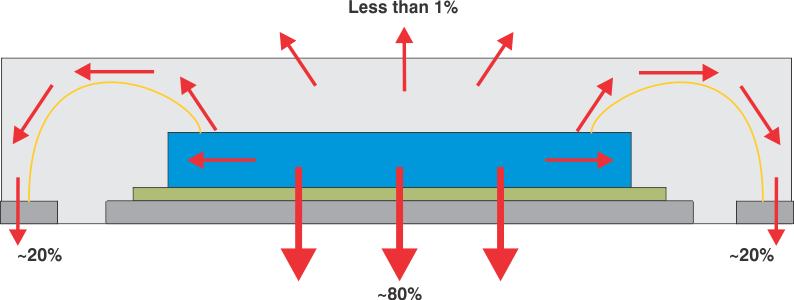 Figure 52. Heat Flow in the QFN Package
Figure 52. Heat Flow in the QFN Package The exposed thermal pad must be soldered to the PCB thermal pad. The thermal pad on the PCB should be the same size as the exposed thermal pad on the underside of the QFN package. Refer to Application Report, QFN/SON PCB Attachment, literature number SLUA271A, for recommendations on attaching the thermal pad to the PCB. Figure 53 illustrates the direction of heat spreading into the PCB from the device.
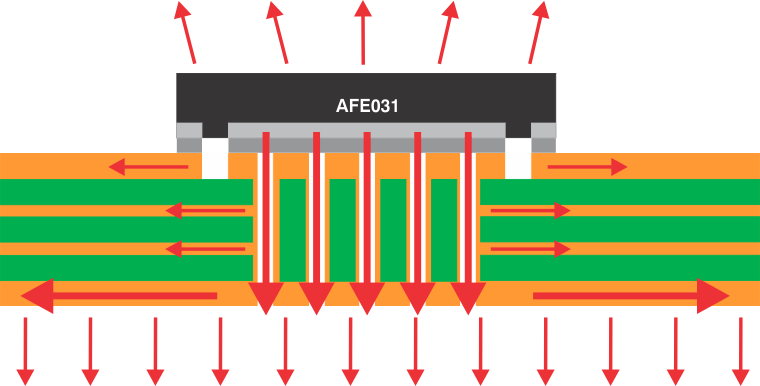 Figure 53. Heat Spreading into PCB
Figure 53. Heat Spreading into PCB The heat spreading into the PCB is maximized if the thermal path is uninterrupted. Best results are achieved if the heat-spreading surfaces are filled with copper to the greatest extent possible, maximizing the percent area covered on each layer. As an example, a thermally robust, multilayer PCB design may consist of four layers with copper (Cu) coverage of 60% in the top layer, 85% and 90% in the inner layers, respectively, and 95% on the bottom layer.
Increasing the number of layers in the PCB, using thicker copper, and increasing the PCB area are all factors that improve the spread of heat. Figure 54 through Figure 56, respectively, show thermal resistance performance as a function of each of these factors.
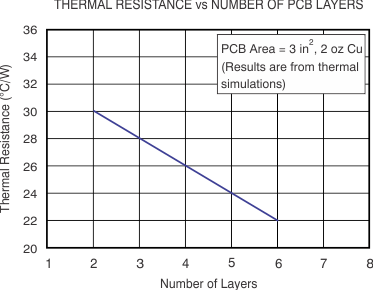 Figure 54. Thermal Resistance as a Function of the Number of Layers in the PCB
Figure 54. Thermal Resistance as a Function of the Number of Layers in the PCB 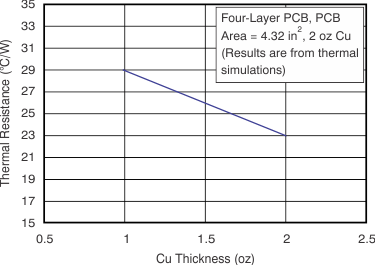 Figure 56. Thermal Resistance as a Function of Copper Thickness
Figure 56. Thermal Resistance as a Function of Copper Thickness 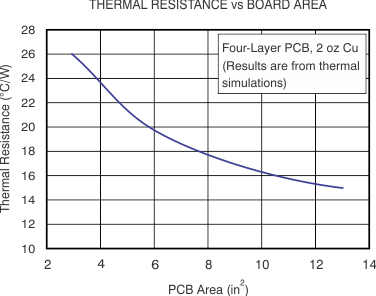 Figure 55. Thermal Resistance as a Function of PCB Area
Figure 55. Thermal Resistance as a Function of PCB Area For additional information on thermal PCB design using exposed thermal pad packages, refer to Application Report Analog Front-End Design for a Narrowband Power-Line Communications Modem Using the AFE031 and Application Report PowerPAD™ Thermally-Enhanced Package; both documents available for download at www.ti.com).